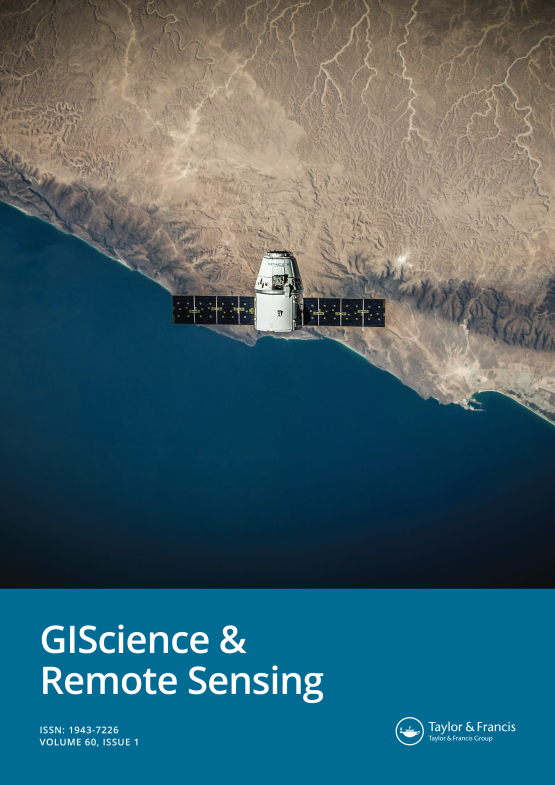Submit a Manuscript to the Journal
GIScience & Remote Sensing
For an Article Collection on
Next-Generation SAR: Innovations in Sensing, Processing, and Interpretation for Earth Observation
Manuscript deadline


Article collection guest advisor(s)
Dr Francescopaolo Sica,
University of the Bundeswehr Munich, Germany
Francescopaolo.Sica@unibw.de
Next-Generation SAR: Innovations in Sensing, Processing, and Interpretation for Earth Observation
Synthetic Aperture Radar (SAR) has evolved from a niche sensing modality into a cornerstone of global Earth observation, offering robust, day-and-night, all-weather imaging capabilities. In recent years, advances in antenna design, onboard processing, and platform miniaturization have fueled the emergence of a new generation of SAR systems, ranging from flagship missions like NISAR and Biomass to agile commercial constellations operating hundreds of small satellites. Simultaneously, transformative progress in signal processing, data fusion, and artificial intelligence is reshaping the SAR information pipeline, from raw data acquisition to high-level semantic interpretation.
The rapid evolution of SAR technologies presents both unprecedented opportunities and significant challenges for the remote sensing community. New mission concepts, including multistatic and small satellite constellations, enable richer spatial and temporal coverage but demand new paradigms for data processing, quality control, and information extraction. Traditional techniques are increasingly limited in managing the scale, complexity, and heterogeneity of modern SAR data. In this context, emerging methodologies, such as deep learning, edge computing, and physics-informed machine learning, are proving essential for unlocking SAR’s full potential. Furthermore, the convergence of SAR physics with high-performance computing, cloud-native architectures, and neural networks is dramatically accelerating the transition from data acquisition to actionable insights.
This Article Collection seeks to spotlight emerging developments that are redefining how SAR data is acquired, processed, and utilized. By showcasing research on innovative sensors, processing frameworks, and computational strategies, this Collection aims to guide the future trajectory of SAR technology and its applications. We welcome contributions that bridge fundamental research with real-world application, especially those demonstrating the potential of new methodologies to enhance the quality, scalability, and interpretability of SAR-based Earth observation. We encourage the submission of high-impact original research, methodological innovations, and comprehensive review papers that address advancements across the full SAR processing and application chain. Topics of interest include, but are not limited to:
- Novel sensor architectures (e.g., multistatic, MIMO, passive, and tandem configurations)
- Mission design and performance simulation
- Onboard artificial intelligence and edge processing
- Physics-informed, unsupervised, and self-supervised deep learning methods
- Interferometric phase unwrapping and large-scale time-series analytics
- Quality assessment and benchmarking
- Cloud-optimized SAR processing, open-source tools and reproducible workflows
- Data fusion with optical, LiDAR, GNSS-R, or non-imaging microwave sensors
We particularly encourage studies focused on methodological rigor, benchmarking, and algorithm generalizability. Submissions should offer clear technical contributions with demonstrated potential for broader applicability and operational scalability.
Guest Advisor:
Dr Francescopaolo Sica (Senior Member, IEEE) received the Laurea (M.S.) degree summa cum laude in Telecommunications Engineering and the Ph.D. degree in Information Engineering from the University of Naples Federico II, Italy, in 2012 and 2016, respectively. Since 2022, he has been Deputy Head of the Chair of Earth Observation at the Faculty of Aerospace Engineering, University of the Bundeswehr Munich, Germany. From 2016 to 2022, he held postdoctoral research positions at the German Aerospace Center (DLR) and the European Space Agency (ESA), contributing significantly to the advancement of Synthetic Aperture Radar (SAR) technologies. His research spans mission design, advanced SAR signal and image processing, and operational applications of SAR data.
Dr. Sica is currently focusing on the integration of deep learning techniques to enhance SAR data interpretation and analysis. He serves as Co-Chair of the Benchmarking Working Group of the IEEE-GRSS Image Analysis and Data Fusion Technical Committee (IADF) and is a key contributor to the ISPRS Working Group on Active Microwave Sensing.
Further Information:
All manuscripts submitted to this Article Collection will undergo a full peer-review; the Guest Advisor for this Collection will not be handling the manuscripts
Please review the journal scope and author submission instructions prior to submitting a manuscript.
The deadline for submitting manuscripts is 28 February 2026.
Please contact Alex Johnson at alex.johnson@tandf.co.uk with any queries and discount codes regarding this Article Collection.
Please be sure to select the appropriate Article Collection from the drop-down menu in the submission system.
The Guest Advisor for this Collection has declared no conflicts of interest in preparing this Article Collection.
Article Collection Key Terms:
1. Synthetic Aperture Radar (SAR)
2. Signal and Image Processing
3. Deep Learning and Artificial Intelligence
4. Sensor and Mission Innovation
5. Earth Observation
Benefits of publishing open access within Taylor & Francis
Global marketing and publicity, ensuring your research reaches the people you want it to.
Article Collections bring together the latest research on hot topics from influential researchers across the globe.
Rigorous peer review for every open access article.
Rapid online publication allowing you to share your work quickly.
Submission Instructions
All manuscripts submitted to this Article Collection will undergo desk assessment and peer-review as part of our standard editorial process. Guest Advisors for this collection will not be involved in peer-reviewing manuscripts unless they are an existing member of the Editorial Board. Please review the journal Aims and Scope and author submission instructions prior to submitting a manuscript.

